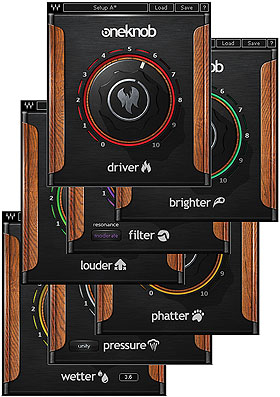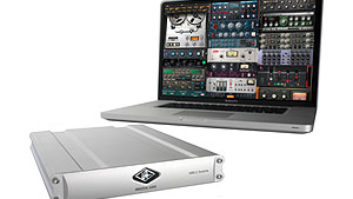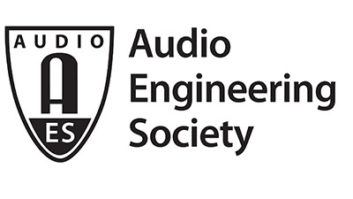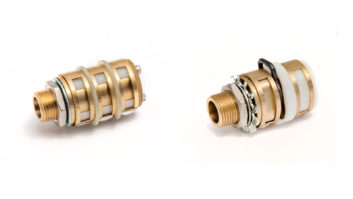
Waves’ OneKnob plug-in bundle comprises seven DSP-sipping processors.
As the name implies, the OneKnob Bundle from Waves is a collection of plug-ins designed for quick and simple operation through use of a single knob (though some also include a pushbutton). The package includes seven plugs and is available only in Native format, supporting sample rates up to 96 kHz. Two OneKnob plug-ins—Louder and Pressure—support sample rates up to 192 kHz. An iLok is required for authorization.
The OneKnob Bundle includes Brighter, Driver, Phatter, Filter, Louder, Pressure and Wetter; each name accurately describes the plug-in’s function. You can automate all OneKnob plug-ins, which require minimal DSP resources. For example, in one particular 88.2kHz Pro Tools session, I had 55 instances of various OneKnob plug-ins, which collectively used 50 percent of my computer’s CPU resources.
All OneKnob plugs are a breeze to use, though I found it odd that they do not appear under their respective menu categories in Pro Tools. For example, you will find Pressure under Other > OneKnob rather than in the Dynamics plug-in menu.
LOUDER, DRIVER, BRIGHTER
I’ll start with the simplest of the bunch, Louder, which employs compression and peak limiting to make tracks louder by as much as 24 dB. Think of it as a way to take a track “up to 11.” You may not need this feature every day, but when you do, it works. At most settings you won’t hear Louder doing anything other than increasing gain, but as you approach 10, you’ll start to hear a bit of added crunch.
Driver creates overdrive on a track. Crank it up on a vocal track and it sounds like you plugged a vocal microphone into a Marshall amp. Driver should be used carefully on sounds that contain substantial low-frequency information because it cuts the bottom end progressively as drive is increased. Though I liked the way it sounded on electric bass, it thinned out the bottom so you’ll need to either feed Driver from an effects send and bring it back on a return, or duplicate the bass track and insert Driver on the duplicate.
Sorry to say that Brighter will not make you smarter, but it will add sparkle to a track. This plug-in definitely helps tracks poke through a mix, but I wasn’t crazy about it on snare drum or male lead vocal, where it sounded papery. On a female jazz singer, it was wonderful, providing air and immediacy that was previously lacking. It also worked well on overheads in combination with several other OneKnob plugs (described below).

PHAT AND WET
There is no way to describe Phatter other than to say it makes tracks Phat (note the capital P). It adds weight to electric bass, whump to kick drum or floor tom, and slam to synth bass, but somehow it does not turn these sounds to mush, even when cranked way up. It works well on male or female vocal, as long as you don’t overdo it. In one case, Phatter put the warmth back into an acoustic guitar track that sounded overly bright and lacked body. When I processed drum overheads with Phatter, Brighter and Pressure, it produced outstanding results.
At its lowest “On” setting of 0.1, Wetter adds a sweet ambient/early reflection effect, placing sounds in a space without calling attention to itself. Moving the knob to 0.2 adds a subtle echo with a repeat-and-a-half and increases the size of the environment. The echo is apparent only on percussive sounds; on most sounds, it blends with the reverb. As the setting is increased, the echo does not change but the room gets larger, progressing to a hall. At 3.5, the high end can become grainy—again, most apparently on percussion.
I would describe Wetter as a serviceable reverb. It’s certainly no competition for Waves’ IR1, but there is a hidden benefit here for inexperienced engineers: Even when Wetter is maxed, it does not become uncontrollably sloppy. My students often ask me how to improve their mixes, and many of them don’t pay attention to reverb decay time, so they aren’t aware of the mud that long reverb adds to their mixes. They’d be far better off using Wetter because it won’t add that rolling decay, which can destroy clarity in a mix.
FEEL THE PRESSURE
OneKnob’s Pressure provides three modes of compression: Unity, Pad and Boost. Each mode creates distinctly different compression with varying attack and release times. Boost appears to have the quickest release, Unity a medium release and Pad the longest, which proved very smooth for vocals. Settings past 5 can accentuate mouth noise, with Boost being the biggest offender. Applying Pressure to room tracks on a drum kit was awesome. Settings of Unity and 10 produced classic pumping, while 5 produced a smooth, sweet compression. With Boost set to 10, grace notes in between kick and snare hits popped out of the mix. Using the Pad mode set between 8 and 10 produces dirt (i.e., distortion), but back it down to 5 and you’ll barely know it’s there. Inserted on vocal or guitar in Pad mode, Pressure lets a track sit nicely on top of a mix.
Pressure operates in stereo, but there’s no way to link two instances on separate tracks. For example, in one mix I had separate tracks for left and right drum overheads; it would be nice if Pressure would allow one channel to key compression in the other to maintain stable imaging. As workarounds, you can either merge the two tracks into stereo, or copy the first instance of Pressure to the other track.
The OneKnob plug-in that is by far the most fun is Filter, a single-band sweep filter with four resonance settings: None, Moderate, High and Extreme. Filter makes it so easy to create telephone voice, wah and swishy-sweepy effects that it’s tough to resist. The ability to automate Filter’s sweep is very cool. You won’t need multiple automation passes with several EQs to create dynamic equalization effects, like “low fi-ing” a mix. At settings up to 3, Filter is in the family of a lowpass filter. Moving through the middle settings, it begins to sound more like a bandpass filter, and at the highest settings you get a sweeping high boost. Setting Filter to 2 and Extreme Resonance on a mix creates the sort of low-frequency resonance you hear when someone with an obnoxious car stereo passes you on the street.
ONE-TRICK ONEKNOB?
All of the plug-ins in the OneKnob bundle are useful, some more than others. The highlights are Filter, Phatter and Pressure, all of which leave me thinking, “Is there anything that these don’t sound good on?” The pricing is very attractive, and though the lack of extensive parameter control may put off tweakheads, the speed and ease of use make the OneKnob Bundle a very attractive proposition.
Steve La Cerra is
Mix
’s sound reinforcement editor and front-of-house engineer for Blue Öyster Cult.

Click on the Product Summary box above to view the Waves OneKnob product page.







